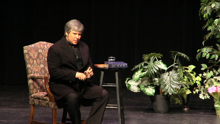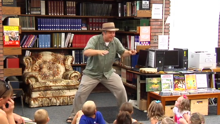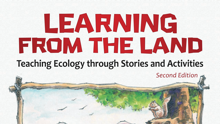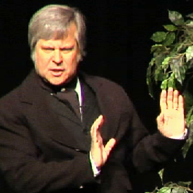 OK, let’s start with the worst case scenario: Several years ago I was presenting a day long pre-conference workshop for the Michigan Science Teachers Association. Always trying to encourage teachers to take their students outside, we escaped from the stuffy conference center to go for a hike, but the only patch of nature we could find in downtown Detroit was a rectangular hole in the pavement about 2’ x 3’ with the dead stump of a former tree and gravel….
OK, let’s start with the worst case scenario: Several years ago I was presenting a day long pre-conference workshop for the Michigan Science Teachers Association. Always trying to encourage teachers to take their students outside, we escaped from the stuffy conference center to go for a hike, but the only patch of nature we could find in downtown Detroit was a rectangular hole in the pavement about 2’ x 3’ with the dead stump of a former tree and gravel…. Yet in this mini-oasis we found a rich community of pill bugs, ants, a centipede, two different kinds of moss, some lichens, a fungus and the gravel was filled with the fossils of an ancient sea bed, truly a teachable moment. We studied the world from the point of view of an ant. We drew pictures of the different mosses, comparing and contrasting their forms. And we wrote stories about a day in the life of a pill bug. It still ranks as one of the best nature hikes ever and a great model for these inner-city teachers to look for nature wherever you find it!
Whatever the season, whatever the weather, the wild world is waiting to offer your students a chance for real learning; even if you are just circling the building, take your class outside and let them immerse themselves in a sense of wonder.
A fall leaf collecting trip, a wintery exploration of animal tracks, spring flowers and summer insect safaris, there is always something going on out of doors. Follow “A Drop Around the World” on a rainy day and see where the rivulets on the playground lead you. Or follow the energy cycles on a sunny day and “Pass the Energy Please.”
If you like structure, the Flow Hike outlined in Joseph Cornell’s classic work, “Sharing Nature with Children” gives you a great pattern to build a simple plan for a hike. I like to start the walk with a few moments of walking in silence for students to keep count of how many sounds they hear. Tune their eyes and ears. Stop to discuss the sounds. Then ask them to find a partner and keep walking while looking for as many colors of the rainbow they can find with that partner’s help. Pass out a one meter piece of string and magnifying glasses to each student to help them create a one meter hike for their partner. They can imagine they are an ant or imagine the world from a Salamander’s point of view.
Students could create a nature journal like Klint in “Salamander Rain.” “Under One Log” or “Under One Rock” are great models for students to explore in detail a smaller habitat in your school yard. “The Blues Go Birding” or “City Beats: A Hip-Hoppy Pigeon Poem” can be an introduction to a bird watching hike. Reading “The Tree in the Ancient Forest” while sitting under the oldest tree on the playground could be inspiration for the class to co-create their own poem about the animals dependent on your “Favorite Tree.”
And for the more adventurous, my book, “The Web at Dragonfly Pond” could be an introduction to a hike that explores the food web on your school grounds. Give each group of four students a spool of string maybe 30 meters long and ask them to make connections between the plants and signs of animal life, a spider’s web, a nibbled leaf, to create a web of life in a meadow or forest nearby. You probably won’t see a cougar, but you might find the husk of an acorn eaten by a squirrel, or a tree with woodpecker holes. Then each group can lead a hike for another group to retrace their interdependent webs.
My grandmother said if it’s worth saying once, it is worth repeating: Whatever the season, whatever the weather, the wild world is waiting to offer your students a chance for real learning.
Brian “Fox” Ellis is the author of 15 books, a sought after school presenter and a frequent keynote speaker at teacher conferences.









